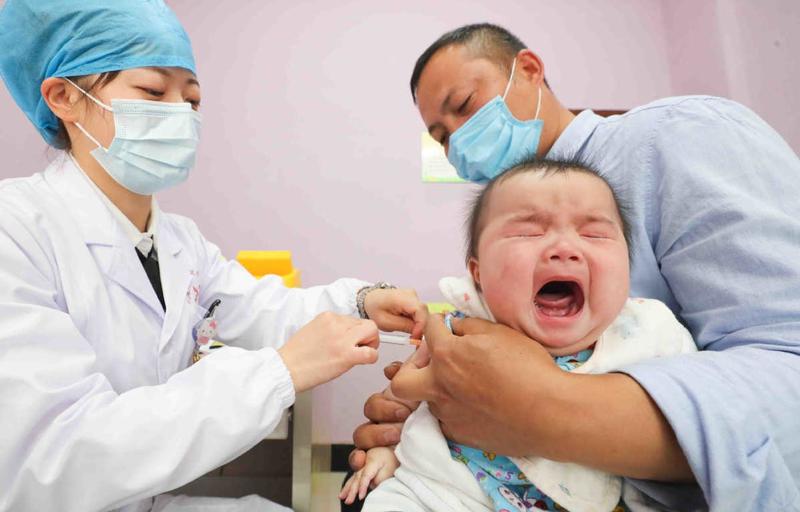 A child cries during an injection at a health center in Huzhou, Zhejiang province on April 24, 2020. (WANG ZHENG / CHINA DAILY)
A child cries during an injection at a health center in Huzhou, Zhejiang province on April 24, 2020. (WANG ZHENG / CHINA DAILY)
Getting a flu shot is especially important this year because seasonal influenza that spreads during autumn and winter may overlap with novel coronavirus infections, and dual infection with both viruses will greatly increase the need for intervention, a top Chinese epidemiologist said.
There is a high probability that the two respiratory illnesses (COVID-19 and seasonal influenza) will surge at the same time then. Getting a flu vaccine is the most effective way to prevent the spread of flu to the greatest extent.
Zeng Guang, chief epidemiologist at the Chinese Center for Disease Control and Prevention
Zeng Guang, chief epidemiologist at the Chinese Center for Disease Control and Prevention, said dual infections have been recorded in China and are likely to peak this fall and winter.
"There is a high probability that the two respiratory illnesses will surge at the same time then," Zeng said. "Getting a flu vaccine is the most effective way to prevent the spread of flu to the greatest extent."
Zhang Wenhong, director of the department of infectious diseases at Shanghai Huashan Hospital Affiliated with Fudan University, told China Central Television on Sunday that there might be a rebound of COVID-19 infections during the autumn and winter, particularly in countries and regions now seeing rising cases.
ALSO READ: Flu vaccine stockpile to double this season
"China, however, has already established a thorough system for epidemic control and prevention and is fully prepared to contain imported cases," he said. "Getting a flu shot will prevent further deterioration from potential co-infection."
Sun Tieying, a respiratory expert from Beijing who helped Hubei province fight the pandemic in February, agreed, adding that with wider flu vaccination, it would also be easier for doctors to decide whether a patient had the flu or COVID-19.
She said 18 of the 50 COVID-19 patients in severe and critical condition she had treated in Wuhan also had the flu.
A study conducted by Renmin Hospital of Wuhan University in February found that laboratory tests of 8,274 close contacts of infected people from Jan 20 to Feb 9 also confirmed that the novel coronavirus could accompany other pathogens including Influenza A and H3N2.
"At first, front-line doctors often struggled to distinguish between the novel coronavirus and the flu," Sun said.
Zeng said the vaccination rate for flu is low in China-at around 2 percent. Production of vaccines is also limited, with only about 30 million flu shots supplied per year.
READ MORE: January flu deaths almost equal to last year's total
He urged government departments to put more effort into mass production of flu vaccines.
Yi Luqian, deputy director of the Hunan Health Commission, suggested including flu vaccines as part of the national immunization plan to provide free inoculations for all, especially children.
She used the downtown district of Kaifu in Changsha, Hunan province, as an example. The district saw a significant drop in reported flu cases-down about 97.3 percent year-on-year-due to early free vaccination for primary and middle school students, as well as older people.


